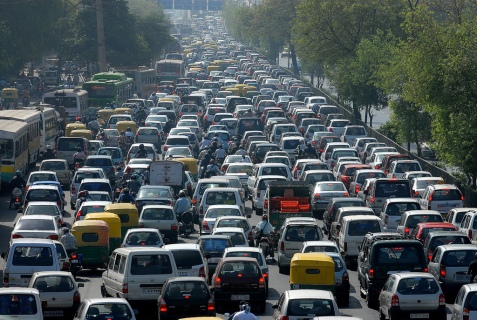 Delhi is such a beautiful city minus the traffic scenery. The social culture of the national capital of India has undergone a dramatic change in the last 10 years. One of the foremost reasons is the skyrocketing real estate prices. Due to the heavy income for rentals and land sales, most of the long settled Delhites are splurging their wealth on the streets. From buying the day’s arrival in the car market whether it is BMW or Audi 7 the real estate rich Delhites are going hammer and tongs. Apart from owning multiple vehicles they also indulge in vulgar display of wealth on the streets. Result of this is rising crime rate and law and order problem.
Delhi is such a beautiful city minus the traffic scenery. The social culture of the national capital of India has undergone a dramatic change in the last 10 years. One of the foremost reasons is the skyrocketing real estate prices. Due to the heavy income for rentals and land sales, most of the long settled Delhites are splurging their wealth on the streets. From buying the day’s arrival in the car market whether it is BMW or Audi 7 the real estate rich Delhites are going hammer and tongs. Apart from owning multiple vehicles they also indulge in vulgar display of wealth on the streets. Result of this is rising crime rate and law and order problem.
Megha Suri Singh writes in The Times of India (15 October 2009)
Traffic jams in the city cost Delhiites Rs 10 crore and the government exchequer Rs 1.5 crore per day, reveals a survey by Centre for Transforming India (CTI). With nearly 1,000 new vehicles being added to Delhi roads every day and the capacity of roads already stretched, experts feel the only way to bring down congestion levels is to develop a sound public transport system that commuters can shift to.
The traffic assessment study reveals that on any given day, one-third of the 60 lakh vehicles registered in the city are on the roads. Each of these, on average, wastes 1.6 litres (2.5 litres for cars and 0.75 litres for two-wheelers), which works out to a total wastage of 30 lakh litres of fuel.
‘‘Our surveys have revealed that traffic jams consume a massive 90 minutes of commuter time on an average every day and about Rs 10 crore worth of fuel. As there is a 15% government subsidy on petrol and diesel, the waste results in a subsidy loss of about Rs 1.5 crore for the state exchequer daily,’’ said Pankaj Sharma, chief trustee, CTI.
Four-wheelers lose 2.5L fuel every day in snarls
A survey by Centre for Transforming India (CTI) identified 15 stretches across the city, including Khanpur to Defence Colony, MB Road, Moolchand to Nehru Place, Vikas Marg, NH-24, Keshavpuram to Ashok Vihar, Rohtak Road to Punjabi Bagh via Zakhira and Idgah to Sabzi Mandi, as major snarl points. The teams drove through the stretches at different times of the day and calculated the average fuel lost due to congestion.
‘‘The difference in fuel consumption was measured by driving on the stretch during peak congestion time and again when the road was empty. Then, based on different experiences from our team and interviews of regular commuters on the stretches, an average daily fuel loss figure was derived. This works out to about 2.5 litres for four wheelers daily and 0.75 litres for two wheelers,’’ Sharma explained.
The total amount of loss to commuters was derived by multiplying the number of vehicles on the road (10 lakh four-wheelers and 10 lakh two-wheelers assuming a 1:1 ratio) by the amount of fuel loss and then multiplying this by the average price of fuel.
Sharma maintained that the figure, though startling, is just a conservative estimate. The survey had not taken into consideration vehicles registered in NCR which ply on Delhi roads. Also, the assumption of only one-third vehicles on the roads is somewhat conservative. It doesn’t even include the cost of man-hours lost on the road, he said.
The survey findings again lend urgency to the need for creating an efficient and reliable network of public transport which commuters, especially those using private vehicles, can switch to. ‘‘This displays a clear lack of integration as even today there is no integrated model of traffic management and public transportation in the city. The government needs to think why, despite there being seven types of public transport in Delhi – the highest in any Indian city – people still prefer private modes,’’ Sharma said.
Leave a comment